Tapering benzodiazepine dosages
If benzodiazepines are overprescribed or co-prescribed with opioids, patients may experience serious side effects, including death. It is important to limit benzodiazepine dosage and duration to the minimum needed to achieve the necessary clinical effect.
Providers should regularly reassess the need for benzodiazepines for patients and discuss strategies for discontinuation. Please review your patients’ medical profiles and if appropriate, consider tapering/discontinuing benzodiazepines to improve the safety of their drug regimen.
Please note:
- Tapering schedules should be individualized for each patient.
- Dosage should be adjusted based on the patient’s response.
Based on the patient, a rapid or slow taper may be appropriate.
- Rapid taper may be considered for patients who have taken benzodiazepines for less than four weeks. In this method, benzodiazepine discontinuation takes place by a relatively larger drop in dose and more frequent dose reduction than in a slow taper. A rapid taper might involve an initial 25-30% dose reduction weekly until 50% of the dose is reached, followed by 5-10% dose reductions weekly.
- Slow tapershould be considered for patients who have been on benzodiazepines for longer than 4 weeks. A common approach is an initial dose reduction of 5-25%, followed by further reductions of 10-25% every two weeks.
If withdrawal symptoms occur during a taper, return to the dose prior to the most recent reduction and slow the rate of the taper.
For more information, including examples of benzodiazepine tapers, refer to the DHCS Clinical Review: Recommendations for the Tapering of Benzodiazepines.
Naloxone for patients
California prescribers are required to offer naloxone or another drug approved by the FDA for the complete or partial reversal of opioid-induced respiratory depression as a rescue medication when one or more of the following conditions are present:
- The prescription dosage for the patient is ≥ 90 mg morphine equivalent daily dose (MEDD).
- An opioid medication is prescribed concurrently with benzodiazepine or other CNS (central nervous system) depressants.
- The patient presents with an increased risk for overdose, including a history of overdose, a history of substance use disorder or a risk for returning to a high dose of opioid medication to which the patient is no longer tolerant.
Please review your patients’ medical profiles and if appropriate, consider prescribing/furnishing naloxone to improve the safety of your patients’ drug regimens.
Note: These naloxone prescription requirements became effective per AB 2760 on January 1, 2019.
For additional information, you can review the Medical Board of California’s AB 2760 FAQs.


